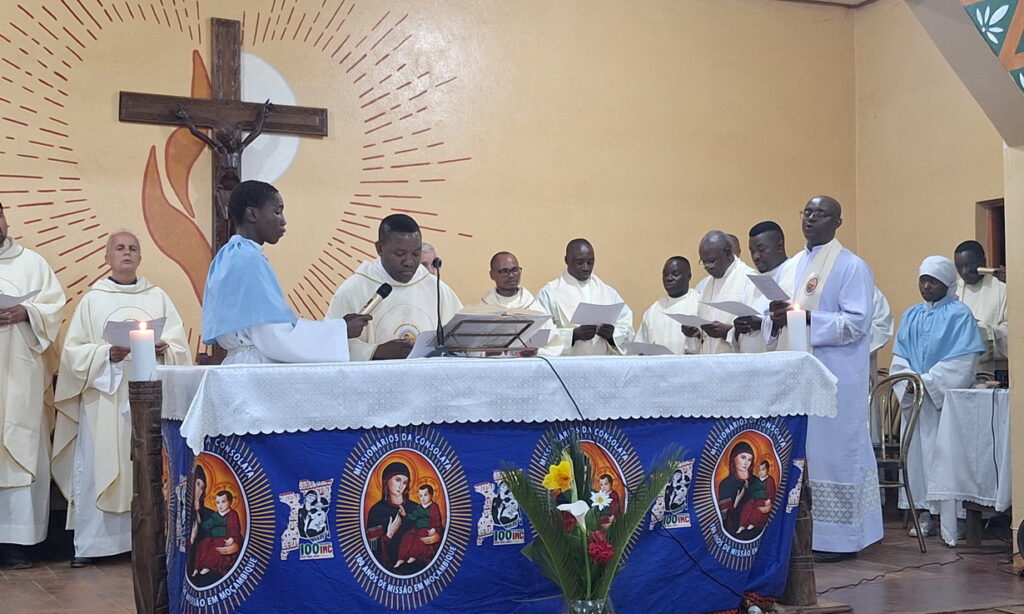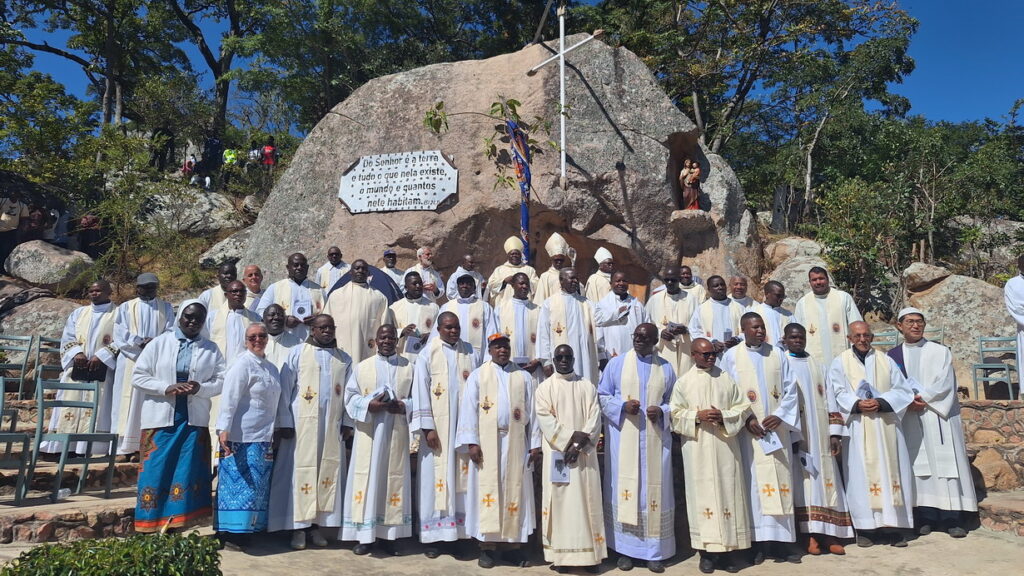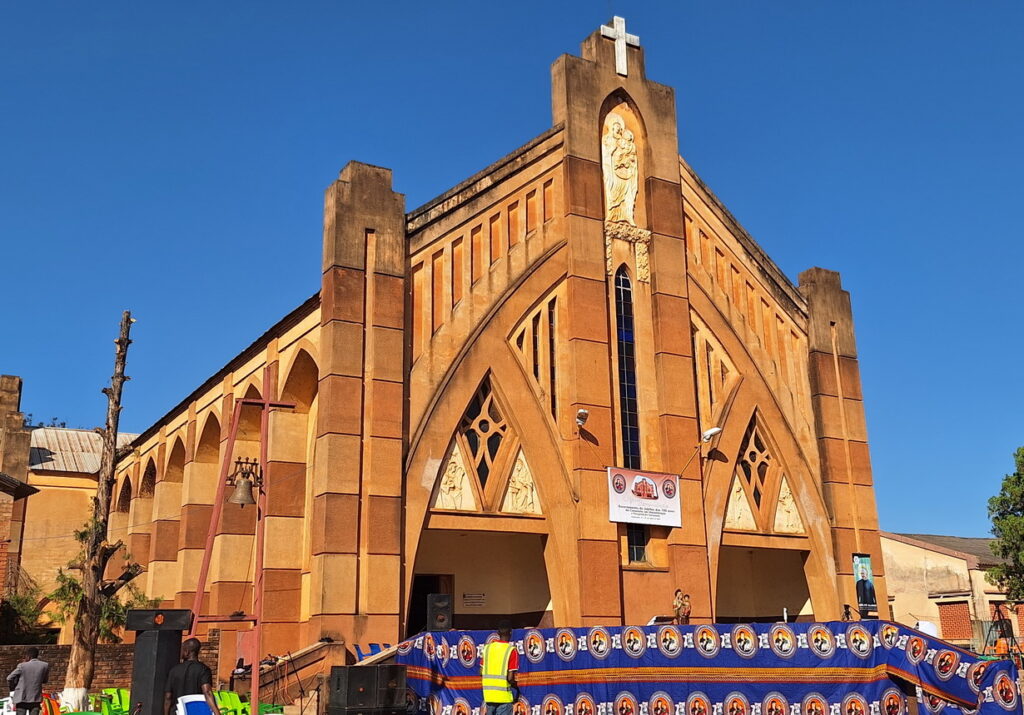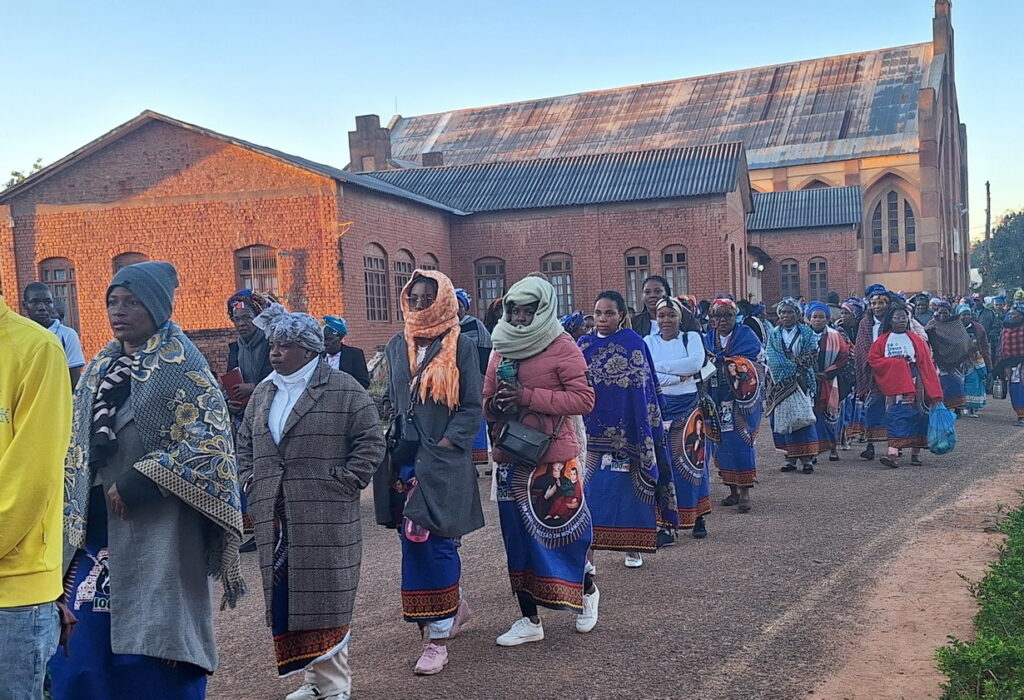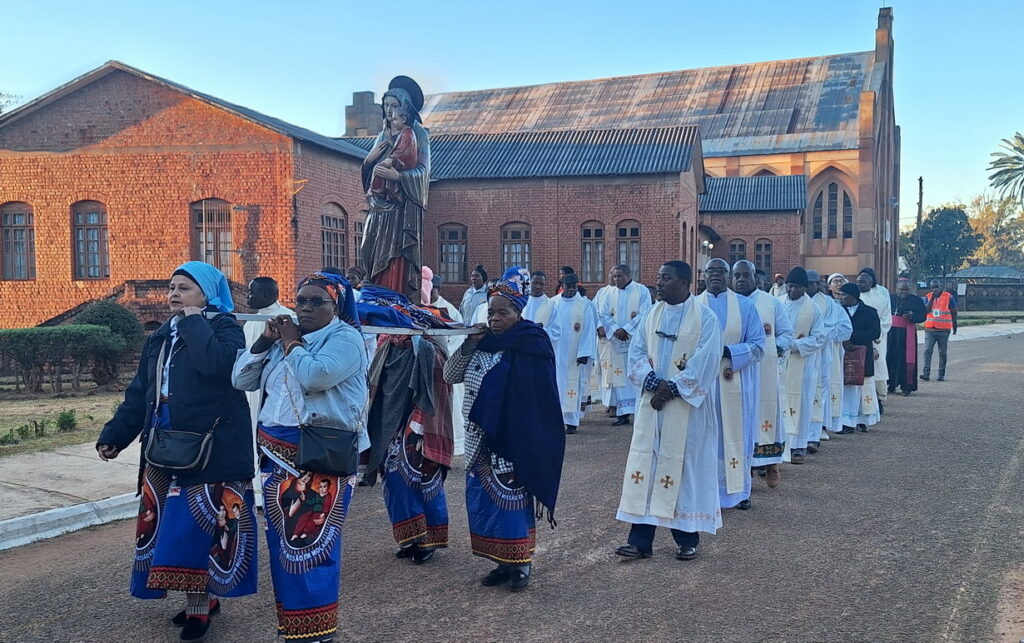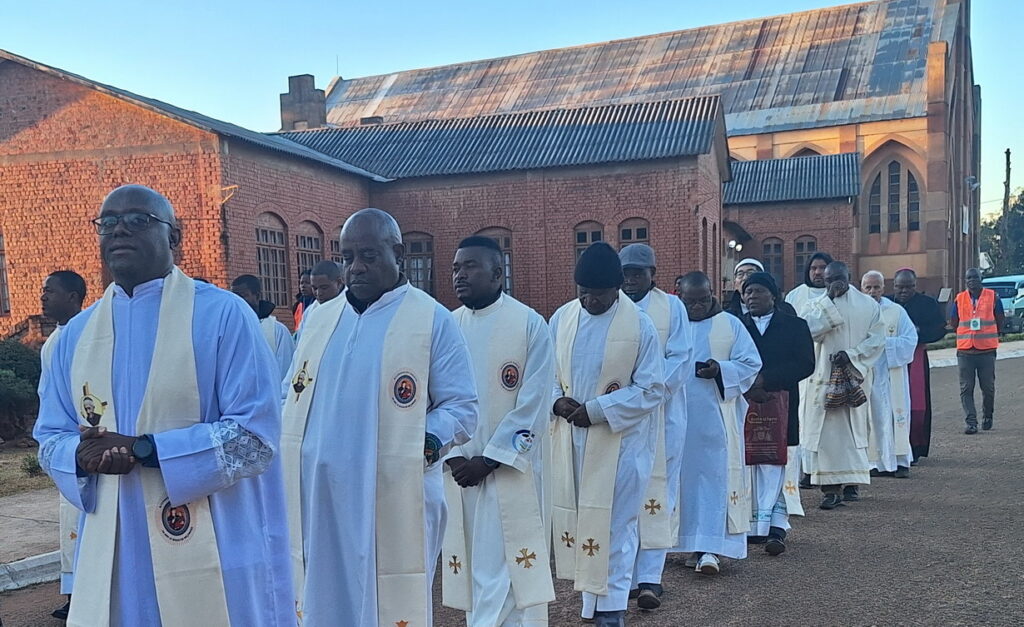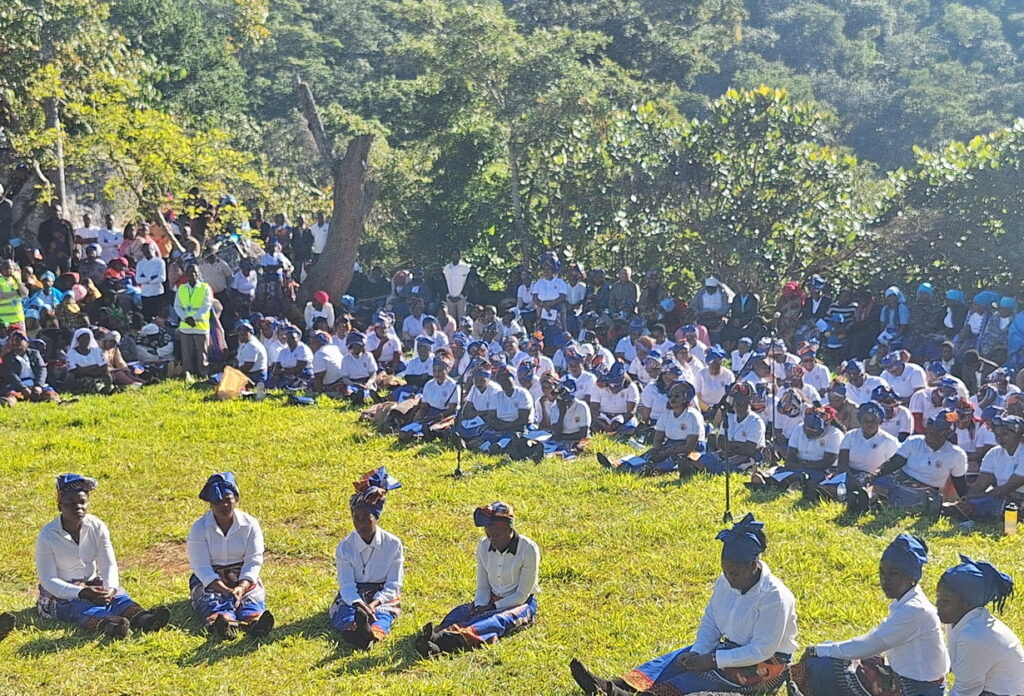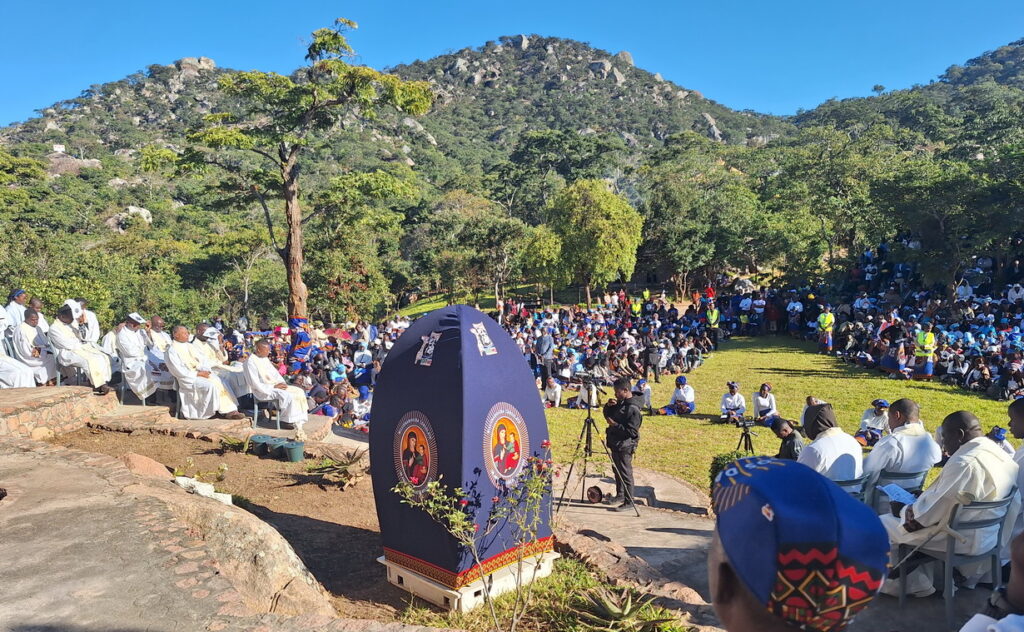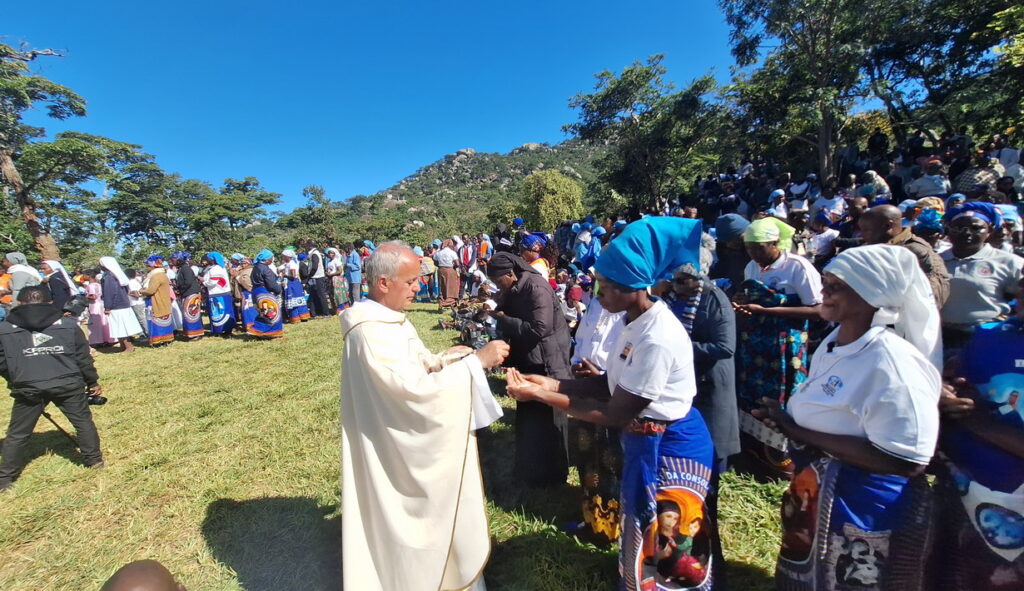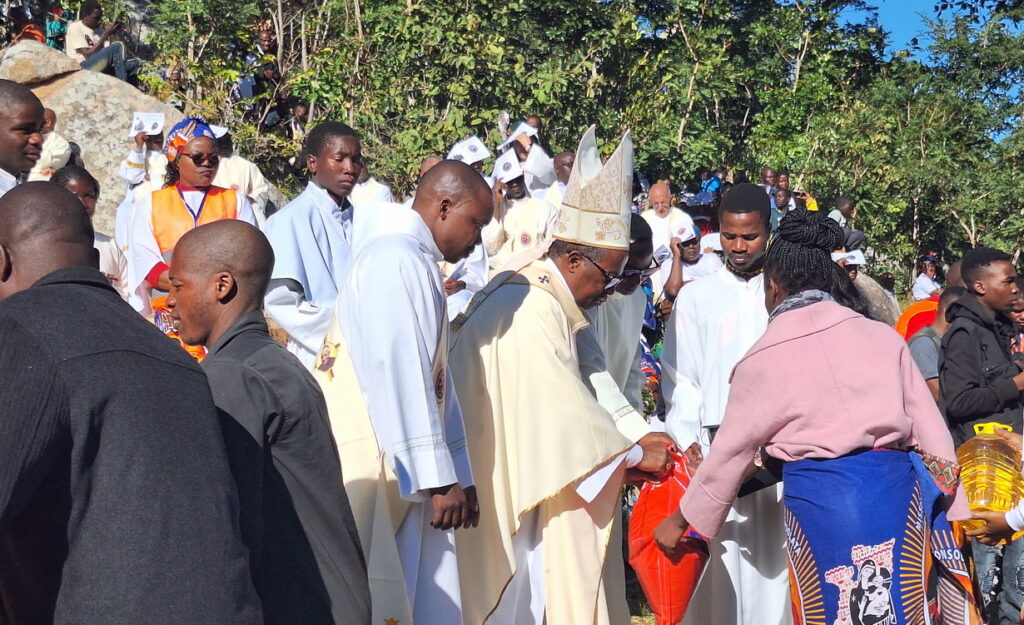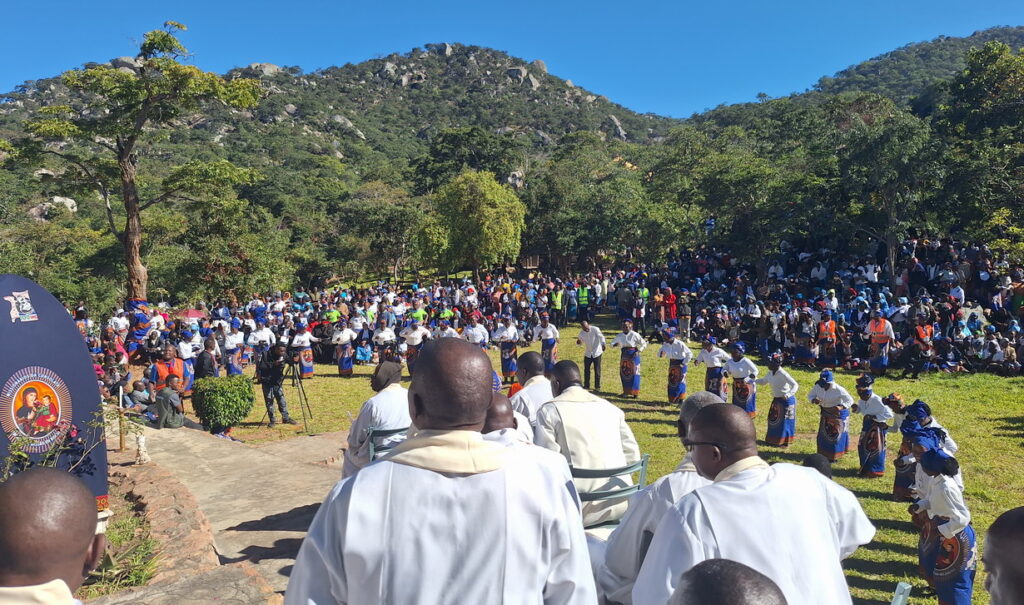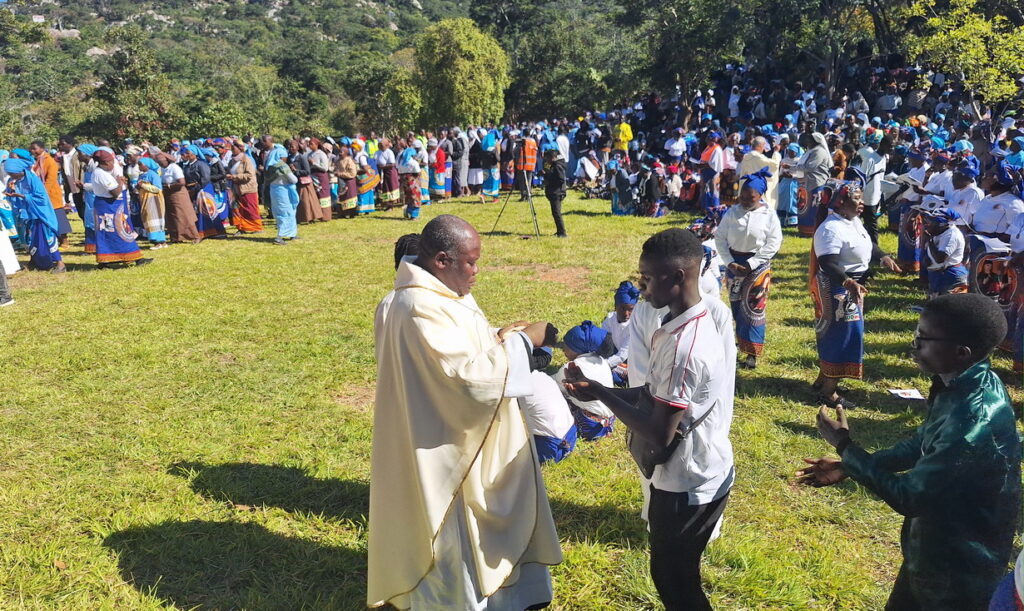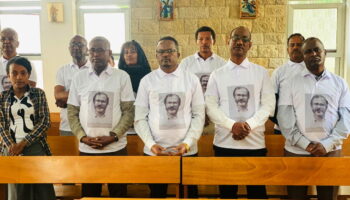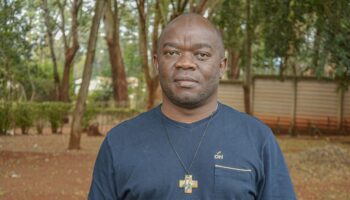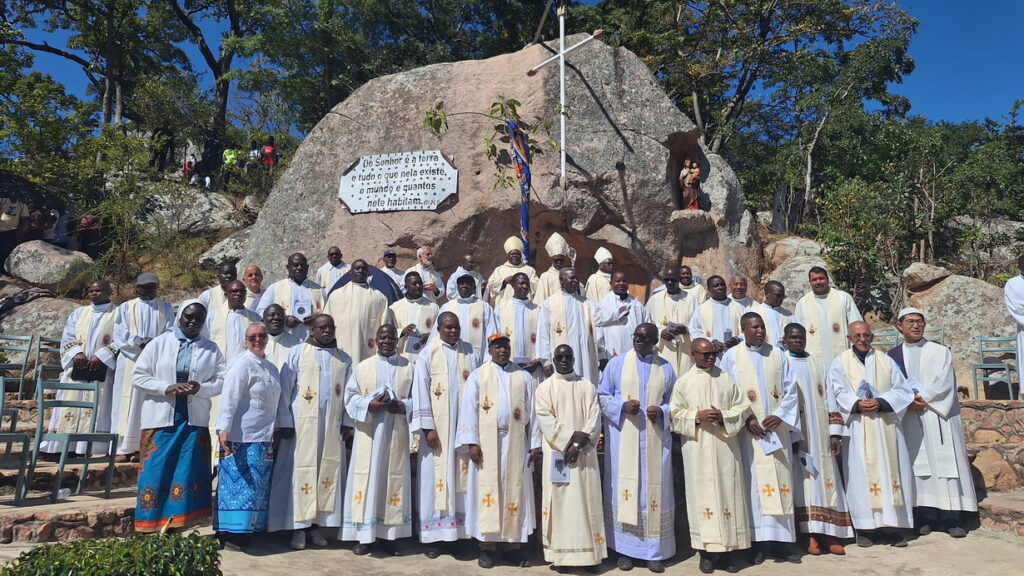
On June 21 and 22, the Consolata Missionaries celebrated the centenary of their presence and mission in Mozambique at the Shrine of Our Lady of Consolata in Massangulo, in the Niassa Province, northern Mozambique. This was the fourth country where the Institute established a mission during the lifetime of its founder, Saint Joseph Allamano.
By Ricardo Santos *
These hundred years have been marked by the joy of initiating evangelization efforts, sharing projects with Christian communities, having the courage to begin anew in difficult times, and showing trust in continuing the work—even during challenging periods such as the colonial war (1964–1974) and the civil war between FRELIMO and RENAMO (1976–1992), which made living one’s faith particularly difficult.
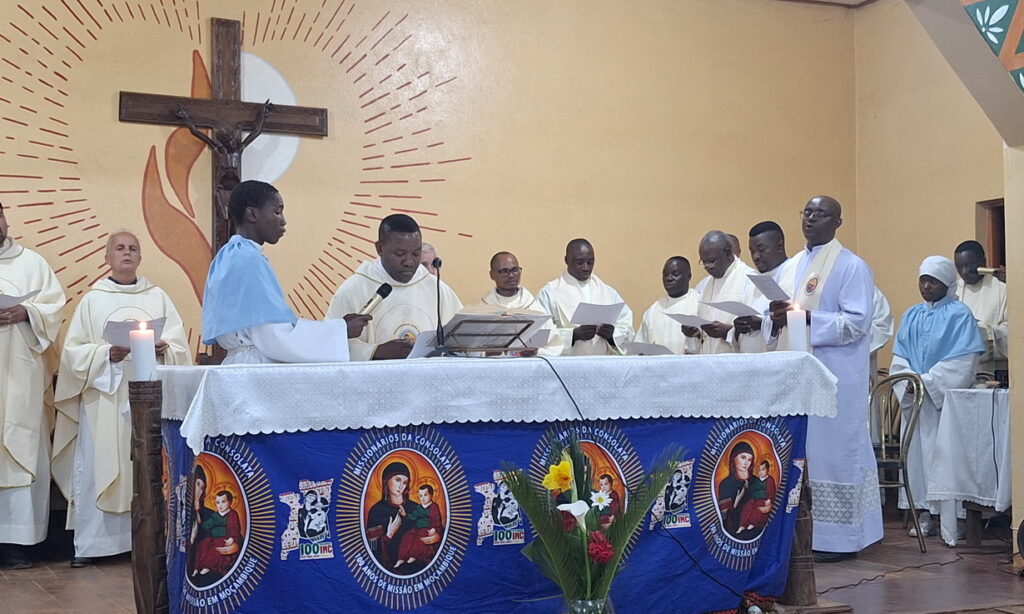
Over the past century, the Consolata Missionaries have carried out evangelization across several dioceses, starting in Niassa and later expanding to Inhambane, Maputo, Nampula, and more recently, Tete. They have provided pastoral, educational, social, and humanitarian services, always aligned with their ad gentes charism and the needs of the people. Their work has included forming diocesan priests and sisters and, above all, significant efforts to improve living conditions.
Centennial Celebrations
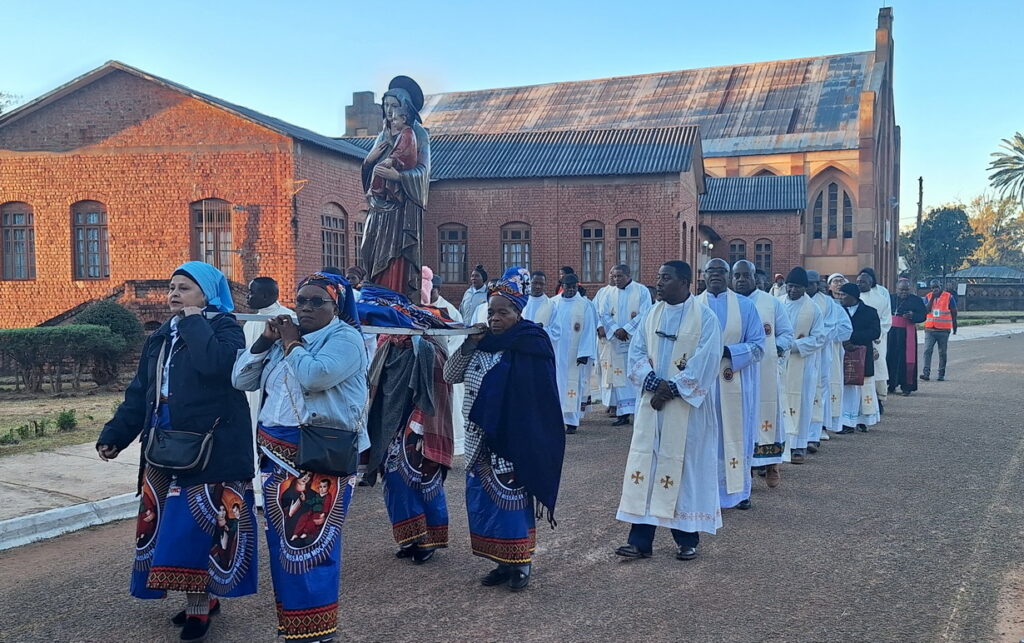
Around 2,000 pilgrims took part in the centenary celebration, including bishops from various Mozambican dioceses, missionaries from different congregations, religious brothers and sisters from multiple institutes, lay members of the Consolata Family, and diocesan priests from parishes in Lichinga, Mecanhelas, Cuamba, Etatara, Maúa, Niassa, Mandimba, Mitande, Nipepe, Majune, Marrupa, Nzinge, Lichinga, and Mecula.

Many friends of the Consolata, animators, catechists, and other missionary families also attended, some traveling over 2,000 kilometers by car or public transport from the capital Maputo to mark this momentous event—the arrival of Father Pedro Calandri and his fellow Consolata missionaries in Niassa back in 1925.
The celebration took place at the Shrine of Massangulo on June 20, the Feast of Our Lady of Consolata, patroness of the first Catholic mission in the territory of the Ayao people. These were days of gratitude to God for the missionary work and solidarity with the Institute that began the evangelizing and human development mission in one of Mozambique’s most remote and forgotten provinces.
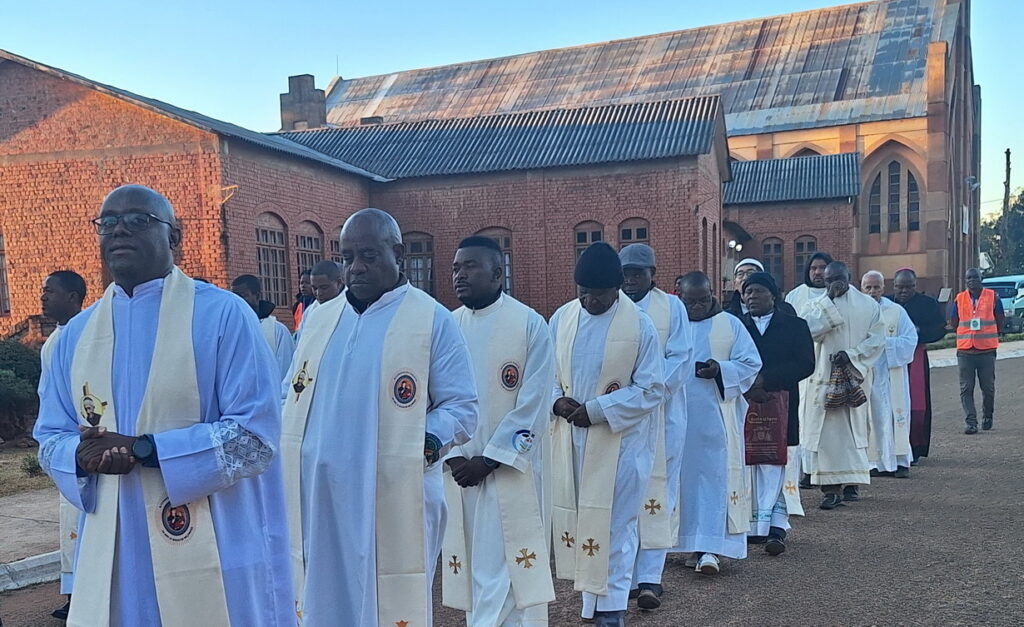
The Consolata missionaries planted a seed that has grown with grace and perseverance among the Ayao, Anyanja, and Macua peoples. These works have endured thanks to the dedication of many priests, brothers, animators, and catechists—some of whom shed their blood, especially during the 16 years of war.
The centennial celebrations began on the afternoon of Saturday, June 21, with a welcoming address from the new regional council and missionaries to the pilgrims gathered at the recently restored Consolata Shrine of Massangulo, originally completed and inaugurated in 1964.
Following the welcome of pilgrims from across the country and from ten different countries, the highlight of the day was a prayer vigil at 9:00 p.m., which included liturgical songs, traditional dances, and festivities.
The Mass was presided over by Bishop Osório Citora Afonso, IMC, Auxiliary Bishop of Maputo, accompanied by Archbishop Inácio Saure, IMC, of Nampula and President of the Episcopal Conference. In his homily, Bishop Osório reflected on the centenary of evangelization, emphasizing that “a missionary must give his life for others and spend his life for his brothers and sisters, not be a mere bureaucrat of the sacred.”
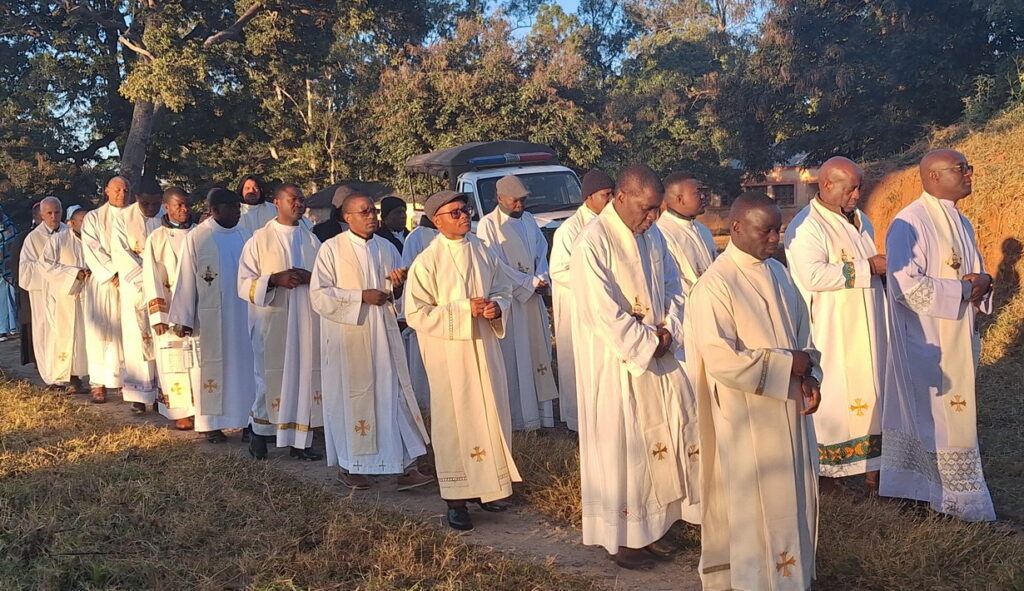
The evangelization process has included education, literacy for children, youth, and adults, technical and primary/secondary schooling, and economic projects like the Mambone Saltworks, which provide jobs, as well as human development centers (e.g., Guiúa in Inhambane) and cultural study centers like the Macua Culture and Anthropology Center in Maúa—all initiatives stemming from the arrival of Father Calandri and the early Italian missionaries.
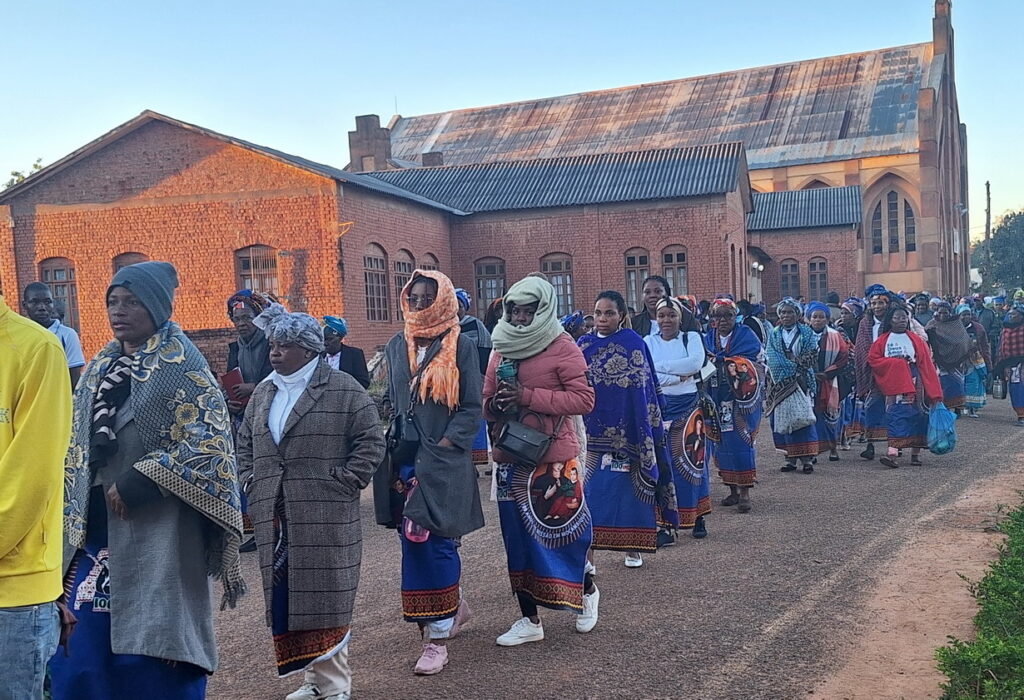
The goal of this weekend was not only to mark the Institute’s centenary in Mozambique but also to hold a diocesan pilgrimage to the Marian shrine—now a national monument and place of worship for dioceses in the vast Niassa region.
The festivities on Saturday, June 21, took place in front of the Shrine. After the vigil, which ended at midnight, a cultural evening followed, animated by choirs and cultural groups from different parishes. There were testimonies from missionaries, including Consolata Sisters and Bishops, followed by the rosary until after 4 a.m.
At 6 a.m., a procession began with the century-old image of Our Lady of Consolata, marking the celebration of Sunday, June 22, the Solemnity of Corpus Christi.
The image of the Holy Founder was carried up to Monte da Cruz through a double line of over 200 meters of faithful, along a forested path marked with Stations of the Cross and lush nature, leading to the Church of the Rock, where fresh spring water flows. This “Laudato Si’” space was created by Father João Nascimento who arrived in 2017, as a symbol of interreligious dialogue in an area marked by both Islamic influence and widespread poverty.
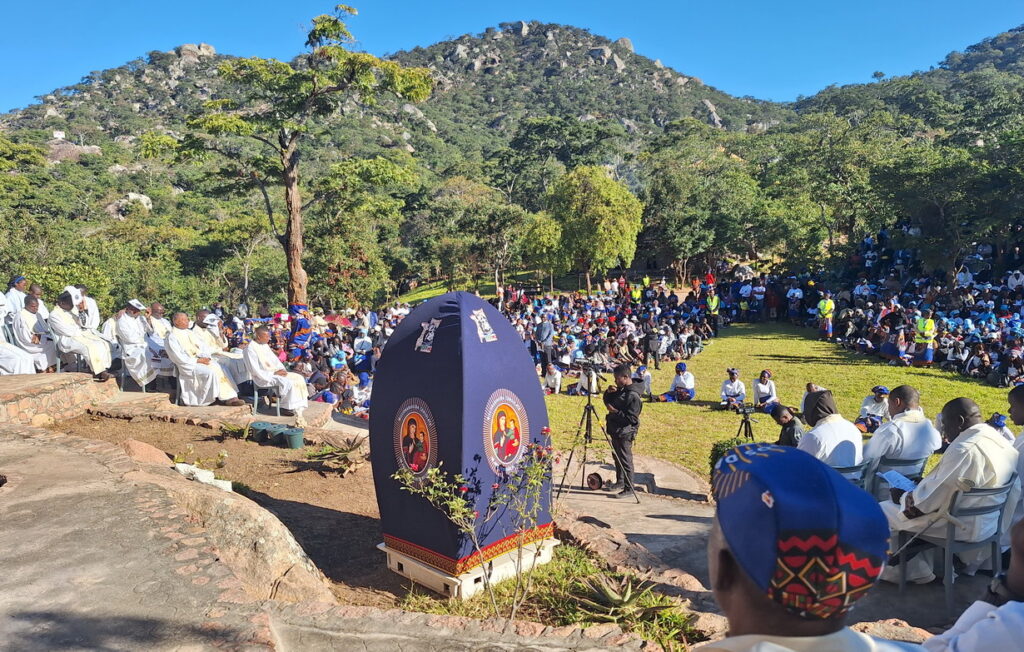
The Hill of Peace and the Garden of Water, where water abounds, are tributes to nature and the harmony of creation—places that inspire those who care about the “Common Home,” as emphasized by Pope Francis.
This hundred-hectare space, respected by both authorities and locals, serves as a meeting point for the diverse identities in Massangulo: Muslims and Christians united in untouched nature, under the watch of the majestic Shrine—a place where culture, religion, and harmony with the planet blend seamlessly.
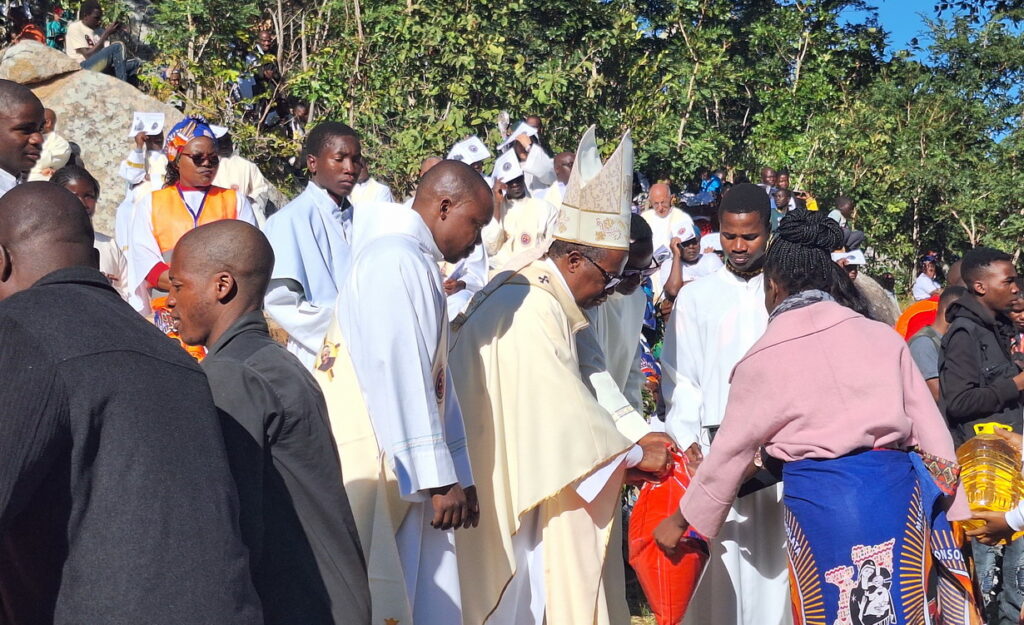
The procession covered 1,400 meters from the Shrine up Monte da Cruz to the Church of the Rock. Highlights included well-executed hymns and musical moments, perfectly integrated into the natural setting of grass, rocks, and water springs.
In his homily, Archbishop Inácio Saure of Nampula emphasized God’s consolation, brought through Jesus Christ, the missionaries’ work for the people, and their role in human development. He also addressed the difficult current reality for Mozambicans, highlighting poor political management and corruption in the public sector. “Many people in Niassa and in Mozambique still live in very poor conditions—especially children, who lack even the most basic necessities,” he said.
A notable moment occurred when a woman, a former student of the missionaries, sang the Ave Maria in Latin after the celebration, recalling the time when Mass was still celebrated in that language.
Since the founding of the Mozambique Region, the Consolata Missionaries—priests brothers and sisters—have remained faithful to God with the help of Mary Consolata, in a region where the Gospel has struggled to take root.
It is hoped that the wind of the Holy Spirit and the protection of Saint Joseph Allamano will continue to guide these missionaries in building a more human “common home,” with greater environmental awareness in the light of Laudato Si’. We are all called to care for Creation, for a world that needs solidarity, awareness, truth, justice, and peace among peoples.
* Ricardo Santos is a Portuguese Consolata Lay Missionary.
